In autumn 2007, while working as Supply Chain Director with Procter & Gamble, I applied internally for a job, which sounded interesting … and daunting. The role would be to lead the integration of the Wella business in Asia by harmonising all 1,500 employees onto P&G contracts and moving Wella’s Enterprise Resource Planning (ERP) system onto the P&G SAP platform. The job was far too big for me at that stage.

But as life sometimes goes, I got the job.
And I can say, it was tough. Very tough. Thankfully, I worked with an experienced and highly driven team of good people, so we were able to deliver our project on time and within budget.
Now, more than 15 years later, I am working with a client on a similar project. The size of the business is not far off from the previous project, but the scope is smaller and less complex. What strikes me when comparing the two projects is something else.
In P&G, we used the so called “waterfall methodology,” a sequential project management approach where tasks flow like a waterfall. Only after the completion of one phase does the next phase start. Things need to be thought through very thoroughly. That means the planning of each phase is rigid and time consuming. The P&G project took nearly three years to complete and involved a large project organisation of more than 100 full-time staff at its peak.
With my current client, we work with a different approach. It is called AGILE, which was developed in the late 1990s as an alternative approach for developing software. The methodology is responsive to change, prioritizes customer collaboration, and fosters iterative development. To oversimplify the approach, using my words, it is about “progress versus perfection.”
To achieve and sustain the kind of forward momentum needed to move projects forward, teams work together in so-called scrums. They’re small teams pushing with determination … strategically and nimbly … in the same direction, like in Rugby.
The goal of AGILE is to provide users exposure to a functioning software in a very short period of time. With this, everyone can test the solutions early, get a feel how the software works and identify / correct bugs with tremendous speed.
At the heart of the AGILE approach are SPRINTS, periods of usually two weeks. At the beginning of each SPRINT, the team discusses and creates a manageable task list for each team member. Then, nothing else matters during these two weeks. Everyone focuses on the list and gets things done. Progress and issues are tracked in so-called “Dailys” … 15-minute team connection sessions. Given their brevity, these meetings are not for brainstorming, problem dumping, or chatting over coffee. The purpose is to focus in an agile way on “progress versus perfection.”
It is important to note that SPRINT does not mean running as fast as you can. Not at all. It means to progress at a brisk and steady walking-speed, a tempo everyone can sustain indefinitely. No risk of burnout or “dead heroes!”
The progress made at my client’s organization with AGILE has been remarkable, and our ambitious goal is to cutover to the new ERP software in just five months from start to finish. Compare this to the three years mentioned above.
As I am learning the ropes of AGILE courtesy of our highly competent project manager (Thx Thomas :-)), I believe there are massive re-application opportunities in our daily lives. This isn’t just working for software development. In some ways, we don’t have much choice. We have to change the way we manage our lives, as the “waterfall model” of planning and executing them cannot keep up with life’s rapid and tumultuous changes.
Here the SPRIINTS can come in handy. What if we break our longer-term goals into SPRINTS, defining just a limited and manageable number of goals for the next two weeks … tasks we can deliver in a “brisk walking speed” without burning out. We don’t do anything else, but work with laser-focus on these limited number of duties. We ignore items which are to be done later.
By the end of the two weeks, we sit down, look at what is done and what should go into the next sprint. We may even consider bringing in a “scrum-team” i.e. one or two accountability partner(s) or friend(s) to help us stay the course.

My challenge to you today is very simple. Have a look at this wonderful little article, describing the application of AGILE to daily life in a little more detail and then plan your first SPRINT. List the things which are absolutely crucial to do in the coming two weeks. Limit the number. Make it manageable and then work them with determination and focus. Knock them out and don’t do anything else.
After two weeks, look at what is done, what needs to be carried over, what has worked well in this SPRINT, and what needs adjustment.
AGILE is saving billions of dollars and years in project executions around the world. It works. So, let it help you achieve your personal goals faster, less stressed and with higher quality.
Happy Sprinting!
– Joerg

Leave a Reply